|
Haleakalā National Park is home to a wide variety of insect and arthropod species. While these creepy crawlies may not be as glamorous, nor as easy to spot as some of the other species found here, they play a vital role in the ecological well being of the park. Many of these species are endemic to Haleakalā, meaning that they are found nowhere else in the world!
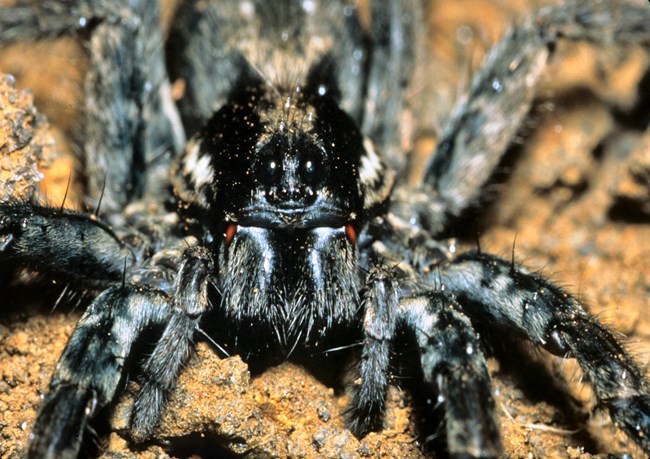
NPS Photo Hawaiian Wolf Spider (Lycosa hawaiiensis)The Hawaiian Wolf Spider is endemic to the Hawaiian Islands, meaning that this is the only region of the world where they are naturally found. They are the largest terrestrial native predator found in the park, with an average body size of 1in. This species does not create a web. Instead, they make their homes between rock crevices, and actively hunt their prey. They have even been observed climbing up brush and jumping off in order to catch prey in mid air.Unlike many other spider species, the Hawaiian wolf spider cares for their young after hatching, and females will carry their young atop their back for several weeks. This species can live up to 18 months, and they can be seen at wilderness campsites within the crater, as well as along Pā Kaʻoao Trail. 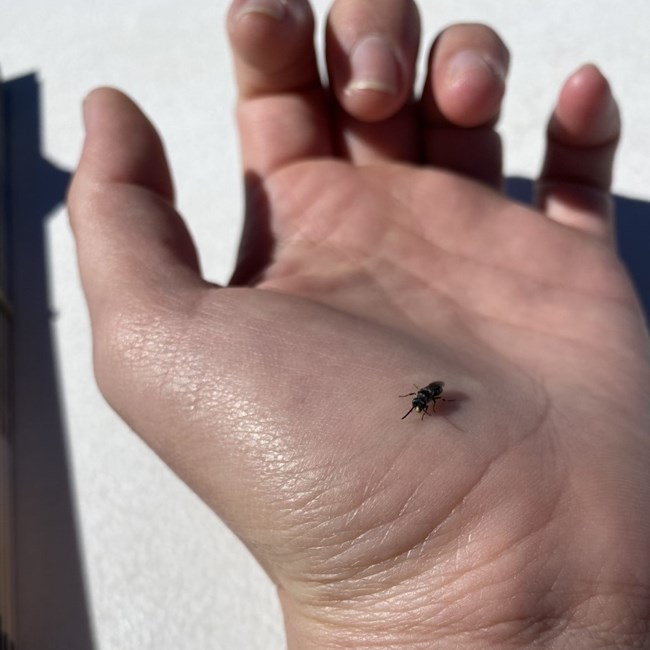
NPS Photo Nalo Meli Maoli (Hyalaeus spp.)Also known as the Hawaiian yellow faced bee, this group of species is native to the Hawaiian Islands and an important pollinator for many endemic plants found in Haleakalā National Park. Unlike the honeybee, the nalo meli maoli is solitary. Females make a tube-like nest underground or in wood, and provide their young with enough pollen/nectar to reach adulthood. Rather than using scopa (external appendages) to carry pollen, yellow faced bees carry pollen in a stomach compartment called the crop, and regurgitate it at the nest.63 different species evolved from a single species' arrival to the islands 400,000-700,000 years ago. In 2016, 7 Hawaiian species were the first bees to ever be placed on the endangered species list. Threats to their survival include a loss of habitat and increased predation by invasive species such as the argentine ant. 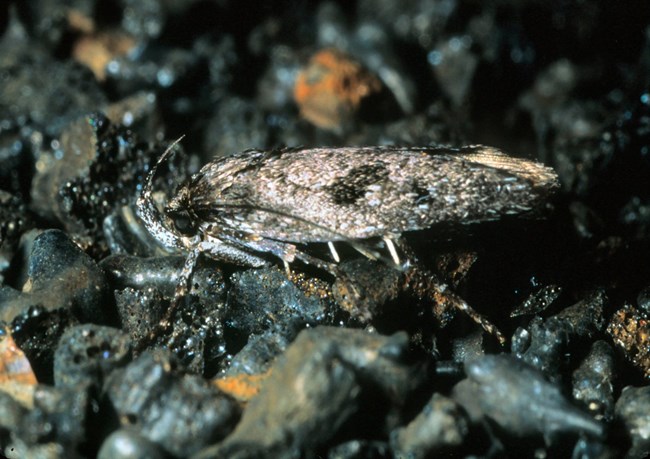
NPS Photo Haleakalā Flightless Moth (Thyrocopa apatela)Also known as the grasshopper moth, this species lost the ability to fly after arriving on the Hawaiian islands. Ranging from habitats at 6000 feet and above on Haleakalā, it was no longer evolutionarily advantageous to fly, due to the presence of strong winds at the summit. Instead, this species is able to travel by jumping, and can jump over 10 times its body length! The average size of a flightless moth is ~10mm.As caterpillars, they build small webs between rock crevices in order to catch windswept debris to eat. Adults are generalist scavengers that will eat leaf litter as well as smaller insects. In the past, their range extended to as low as 5,000 feet, but climate change as well as the introduction of non-native species have limited their range to higher elevations. 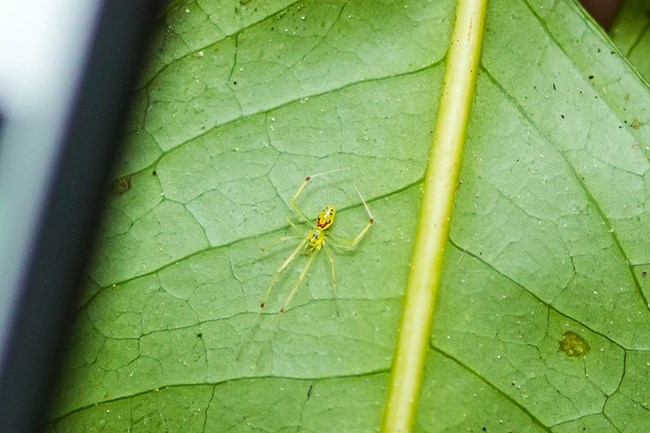
Photo by M. McMasters Nananana Makakiʻi or Hawaiian Happy Face Spider (Theridion grallator)The Happy Face Spider is named after the unique coloration found on their abdomen that often resembles a smiling face. They are in the family theridiidae, same as the black widow spider! Unlike their famous relative, happy face spiders have low venom toxicity, making them completely harmless to humans. This endemic species can be found in wet mesic forests on the islands of Maui, Oʻahu, Molokaʻi, and Hawaiʻi. These spiders are under 5mm in size, and reside on fragile thin webs built on the underside of a leaf. They spend the day on their residence web, and catch most of their prey at night, either dangling from a thread near the web, or searching nearby leaves for suitable small insects to consume. Female spiders will aggresively guard their eggs, and care for their young 4-6 weeks after hatching. At this point, the female will either die or leave the young to fend for themselves. Contrary to their namesake, not every individual within this species has a happy face on their abdomen. Their Hawaiian name translates to “face patterned spider” which may be a more accurate description. Every individual spider has a unique coloration, and can even change color based on their diet! ~70% of happy face spider populations are translucent yellow with no markings or a pattern of black markings, while the other 30% have red and/or white markings as well. The purpose behind this variation in coloring is still unknown, but it is theorized that it helps aid spiders in hiding Non-Native Species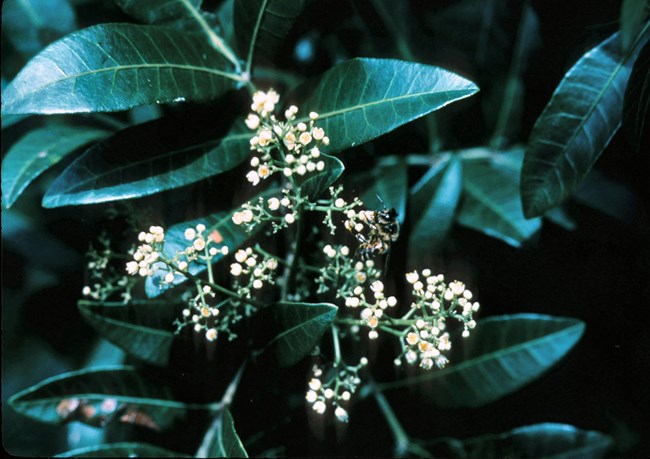
NPS Photo Honeybee (Apis mellifera)Native to Europe, this species was first introduced to the Hawaiian islands by beekeepers in 1857. They are commonly seen at lower elevations within the park, visiting both native and non-native plants. Managed honey bees raised in Hawaiʻi are some of the highest honey producers in the world, and queen bees are often exported to the mainland due to their high rates of production. Although they are vital to the agricultural industry, they provide little benefit to native plant species. Oftentimes, they are not effective pollinators for native species and engage in a behavior known as “nectar robbery”, in which a bee will use their long tongue to consume nectar without pollinating the flower.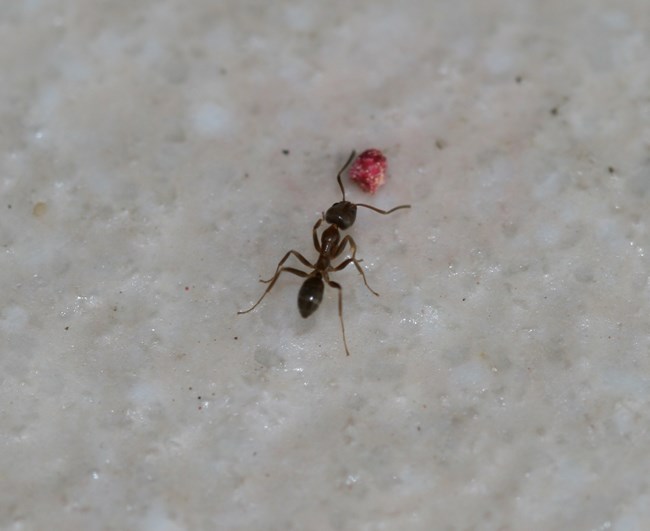
S. Rae Argentine Ant (Linepithema humile)Known as one of the top 100 most damaging invasive species in the world, the Argentine ant made its arrival in Hawaiʻi in 1940 by hitchhiking on a military cargo ship. By 1967, Argentine ants could be seen at Hosmer’s Grove. Since then, they have spread to multiple locations within the park and pose a high threat to many native insect and arachnid species. Insect diversity drops by 50% and insect abundance drops by 65% in areas infested with Argentine ants.There are no native social species in Hawaiʻi, therefore species like the Argentine ant are especially destructive due to the ease in which they are able to outcompete native insects. Visitors can help control the spread of invasives like the Argentine ant by being extra careful cleaning up food while visiting the park, and checking to make sure there are no unwanted insects hitchhiking in your bags when visiting remote areas. 
NPS Photo/R. Kaholoaa Western Yellowjacket (Vespula pensylvanica)Yellowjackets were first introduced to the Hawaiian Islands on Kauaʻi in 1919. In the mid 1970s, they rapidly spread to the other islands. Yellowjackets are considered an invasive species of major concern due their impact on both human health and ecological resources. They both consume and outcompete many native insect species, and can be dangerous to people due to their painful sting.Yellowjackets are attracted to meat, water, sweets, and the scent of certain perfumes/sunscreen, meaning they are often found in picnic areas and other outdoor spots with high visitation.Do not swat at yellowjackets flying nearby, it could make them act aggressively towards you. Instead, walk calmly out of the infested area. It is common for yellowjackets to land on water bottles and soda cans in search of something to drink. Make sure to look at your food/drink before consuming to avoid any encounters with yellowjackets, and always be aware of your surroundings. |
Last updated: January 19, 2022
